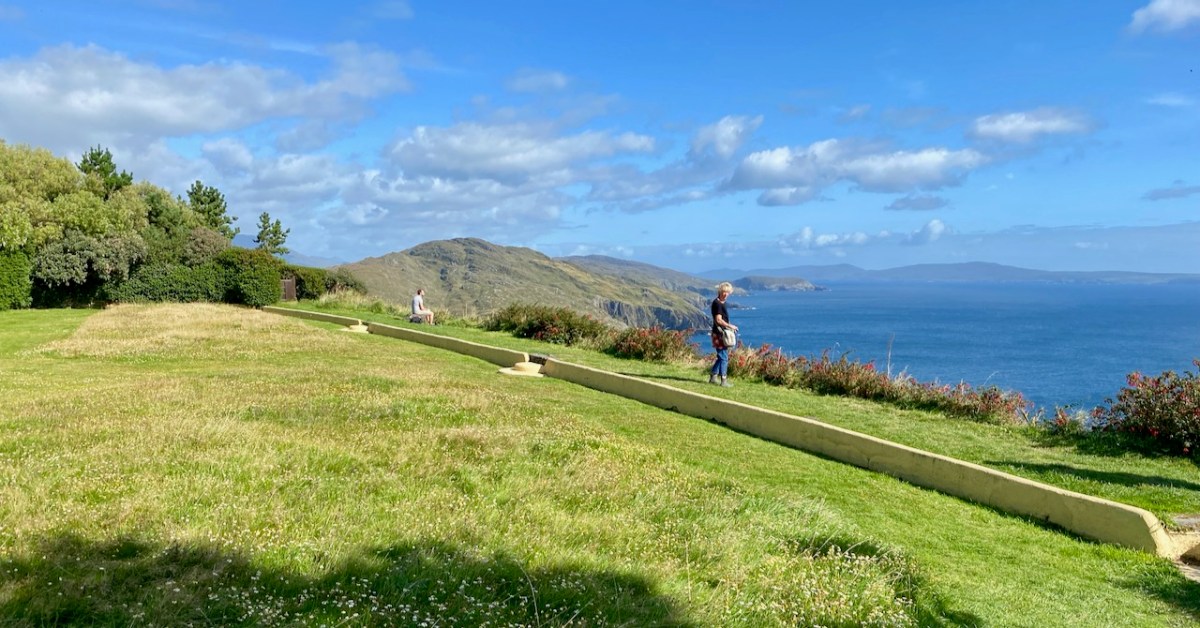
There is a centre of Buddhism on the Beara Peninsula: we visited it for the first time during the week. It is very beautifully situated on the coast south of Allihies. You only have to look at the photograph above, taken at the centre, to realise that the location is a very important aspect of the whole project.
Sa Che or Tibetan Geomancy is the analysis of the earth — including water, space, air, light, trees, garden and home. The principles of Sa Che are to bring harmony and equilibrium, both in the natural environment and within the being, affording good health, wealth and enjoyment. These benefits flow on to our relationships and lifestyle –
Pure Land Farms, California
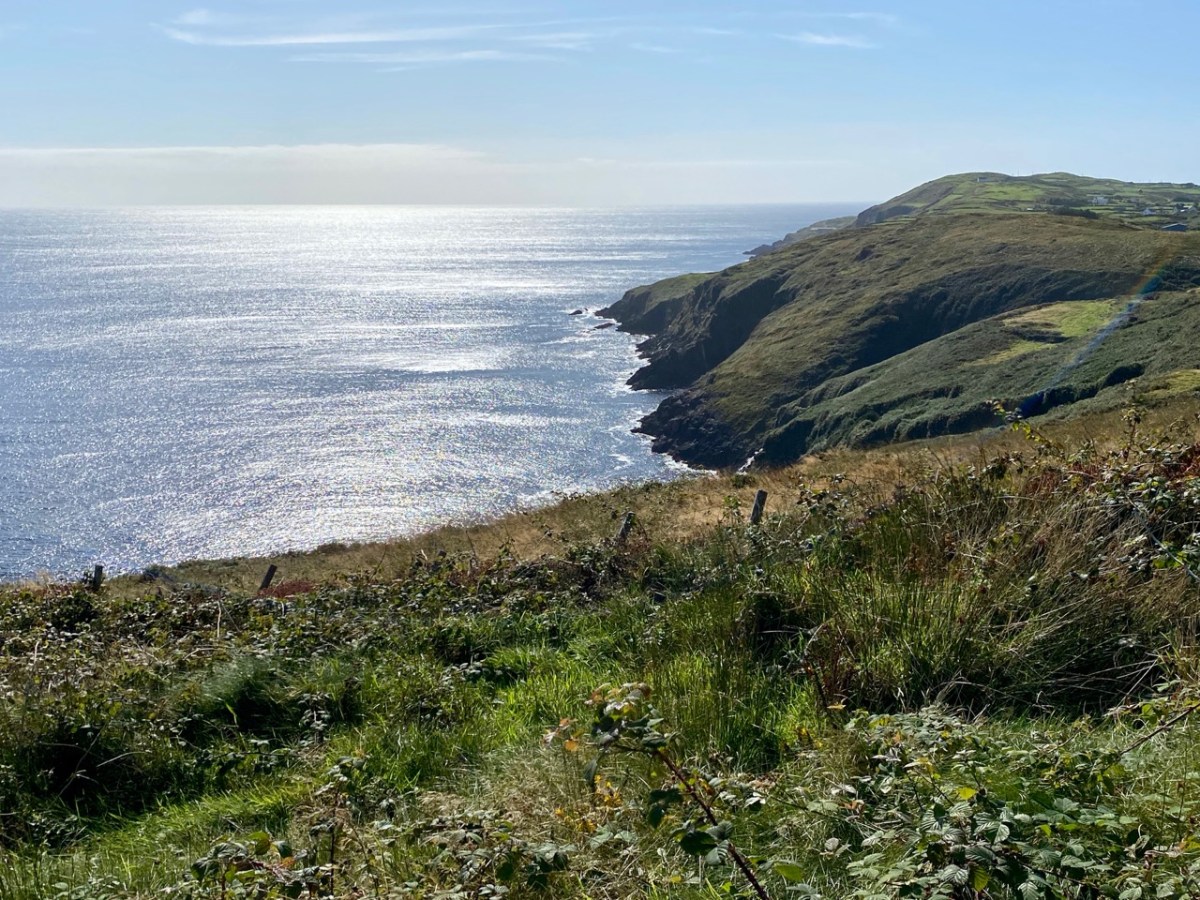
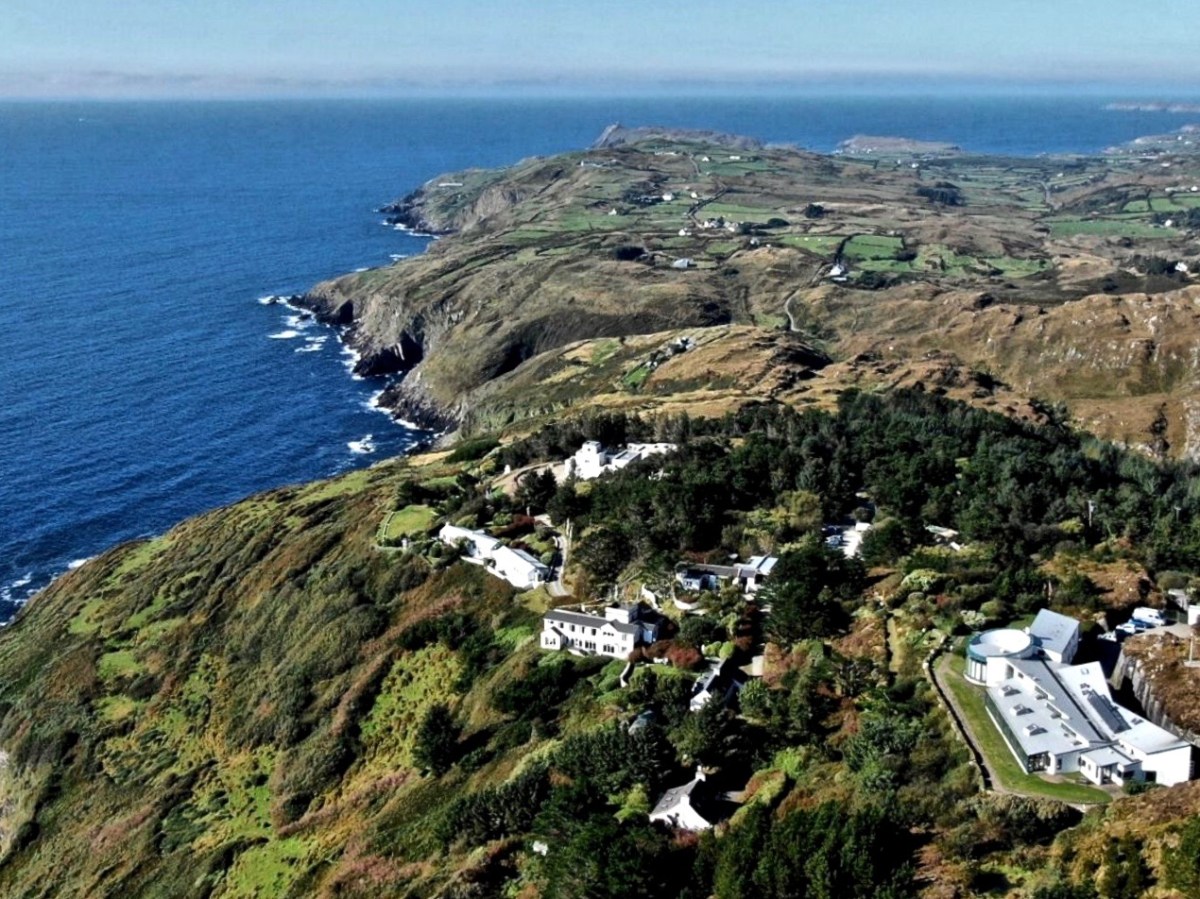
I am using the aerial view, above, courtesy of Dzogchen Beara Tibetan Buddhist Retreat Centre. All the buildings in the lower part of the picture are within the centre, which was founded by Sogyal Rinpoche in 1987. On the lower right is The Spiritual Care Centre – opened by Ireland’s President, Mary McAleese in 2007 – which provides a safe and supportive environment for people living with a life-altering illness, recovering from treatment, facing the end of their life or experiencing bereavement, as well as their families, loved ones and others who care for them. It’s a special, culturally significant place – and you can see how its siting takes the fullest advantage of the impressive scenery.

That’s a Tibetan geomancy chart, above (courtesy of The Wellcome Foundation). It is traditionally used to work out how and where you should build your house – or any important structure: as you can see there is a Zodiac at its heart. As an architectural student back in the 1960s I was fascinated by this concept – then popularly termed Feng Shui – we all were. Throughout my working life I was always seeking to justify my clients’ demands to build in a certain place or in a certain way; I wince, today, when I see the building processes we have here in Ireland – our countryside is ravaged, in my view, by the excavator and the rock-breaker carving out great flat platforms whereon are placed ‘anywhere style’ bungalows or houses, rather than structures which try to flow and blend into the uneven natural landscapes. But I’d better get off my high horse, I suppose. This Buddhist centre on the Beara is an excellent example of buildings ‘fitting in’ to their surroundings.
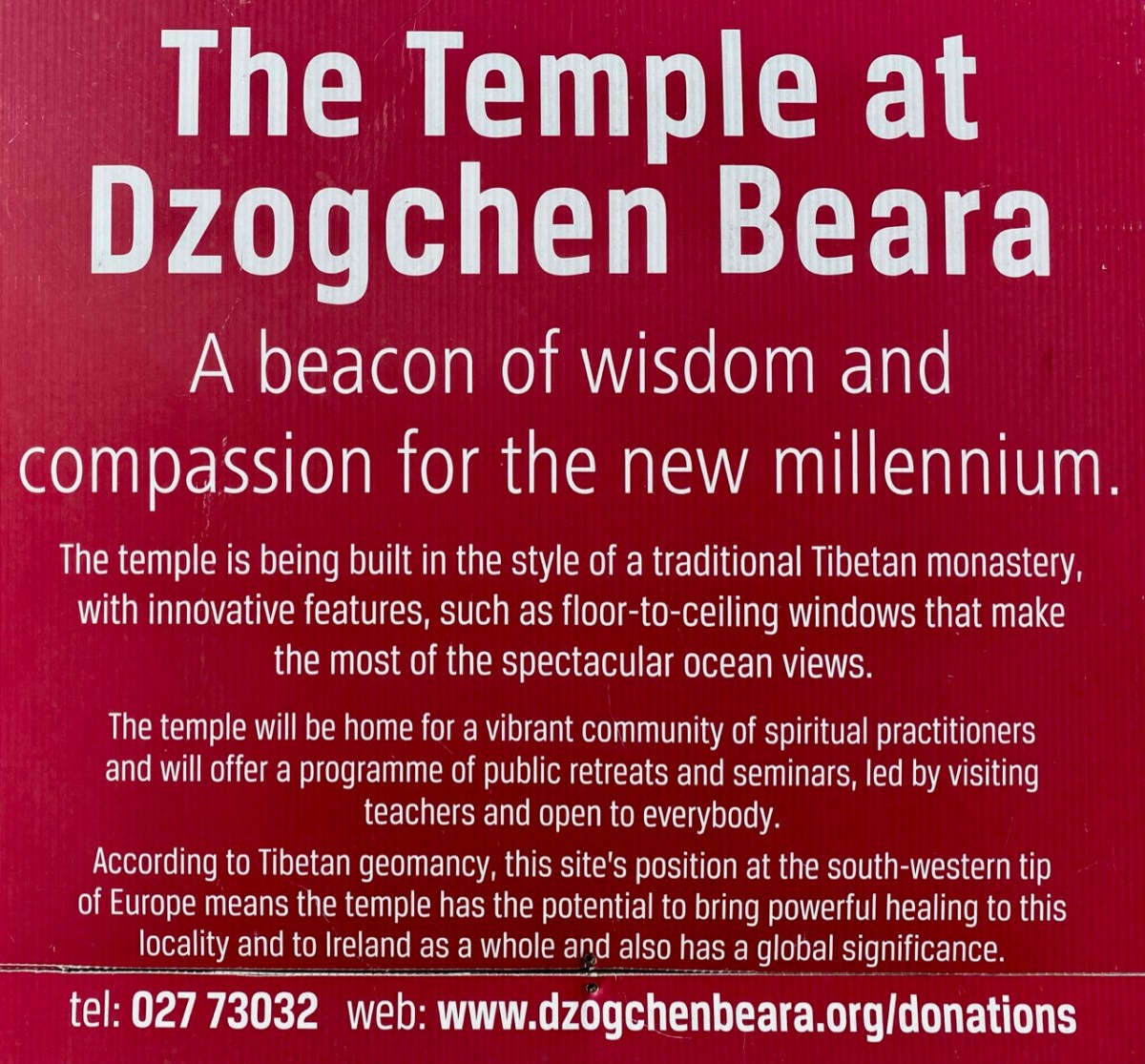
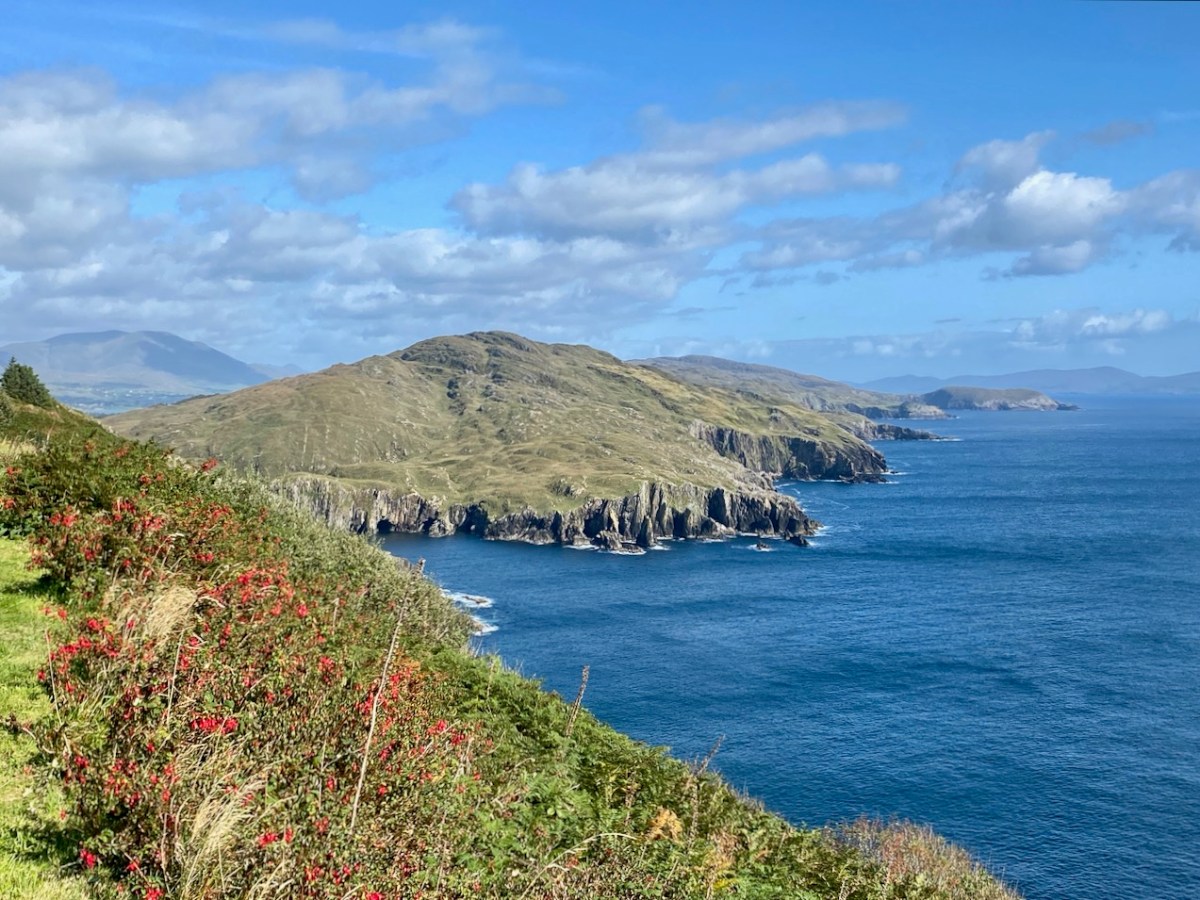
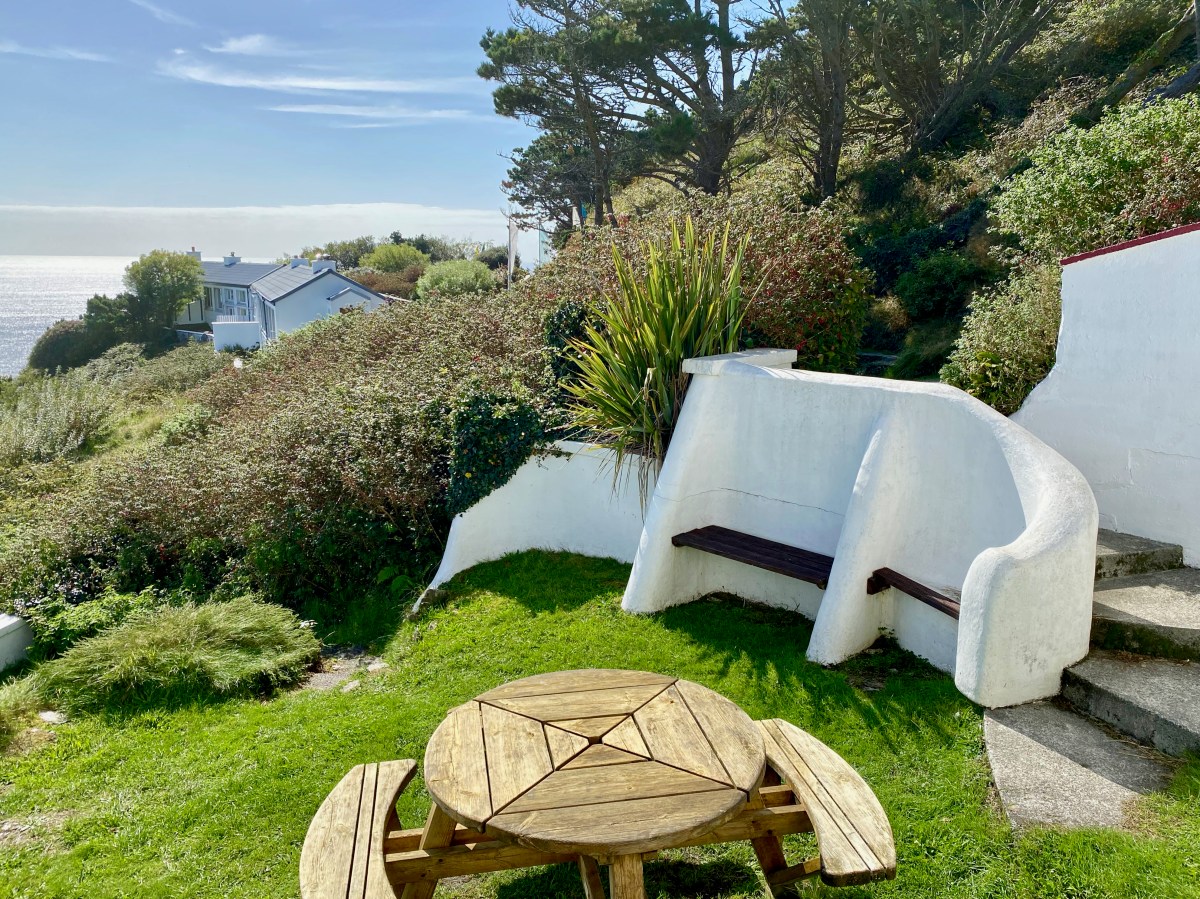
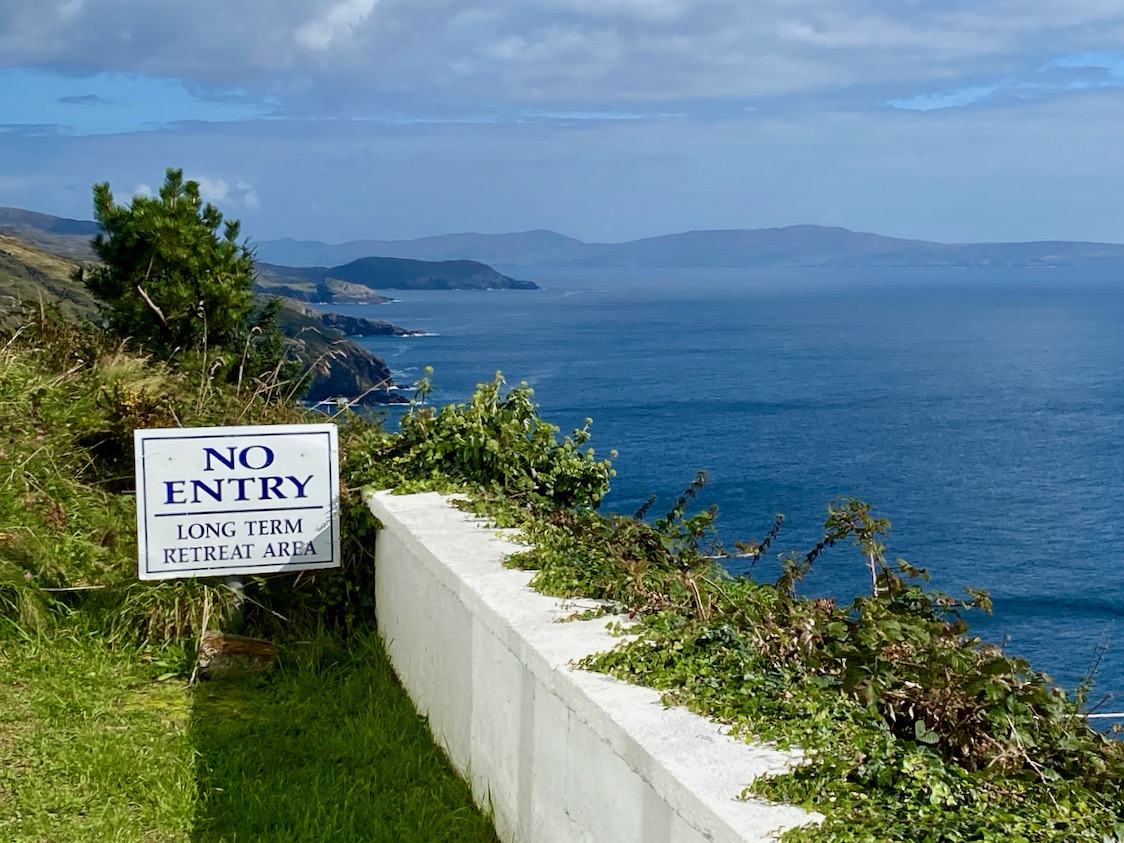
Anyone can visit the centre: it has an excellent cafe which enjoys the unparalleled views, for a start, but there are gardens and grounds to wander around, and many events which everyone can attend: keep an eye on the website.
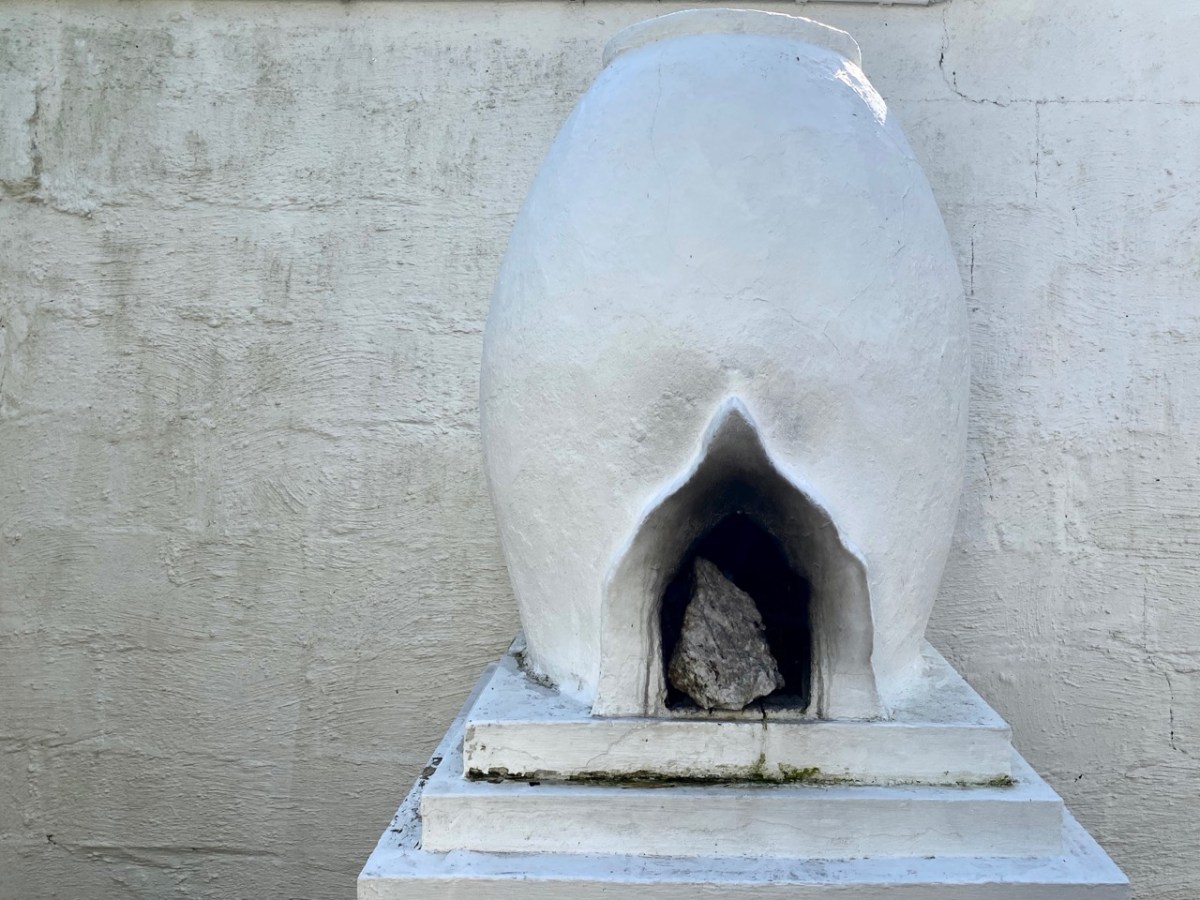
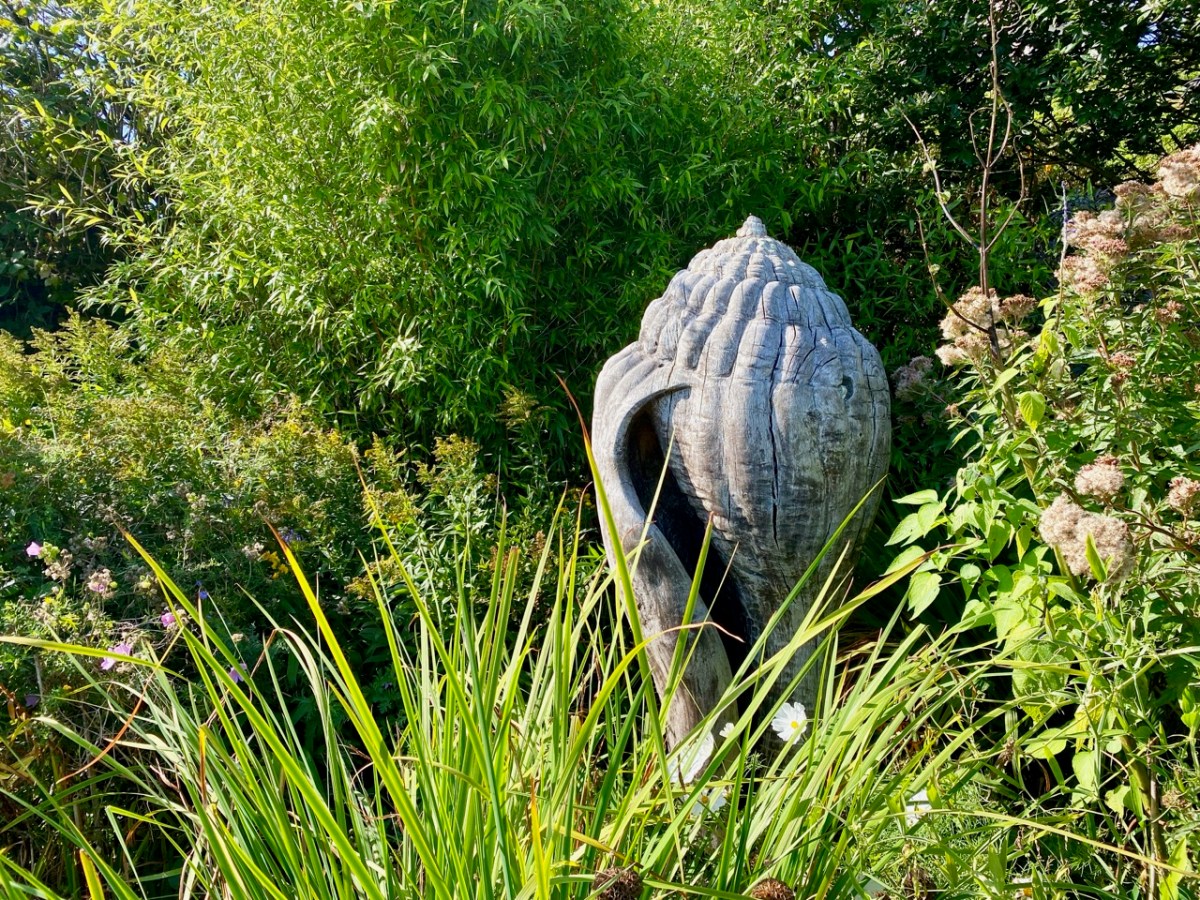
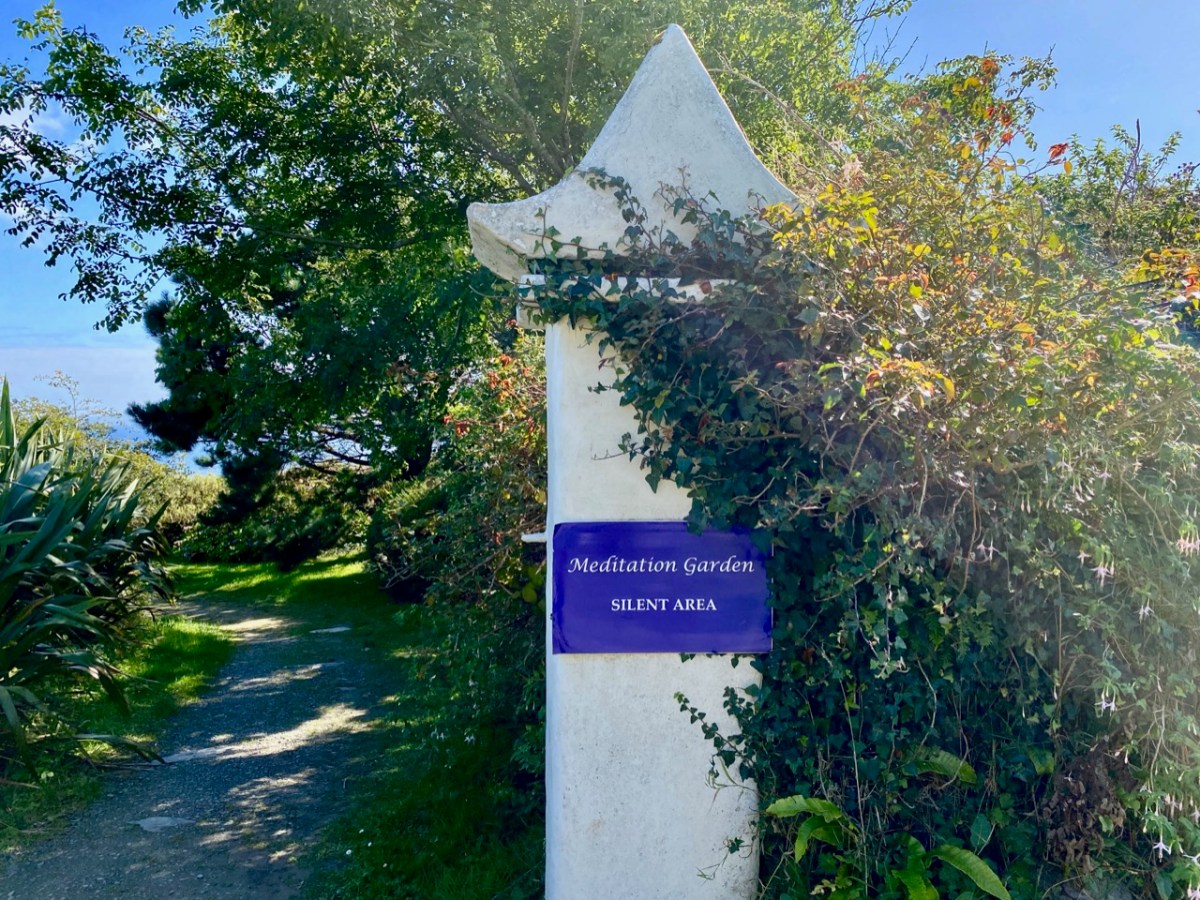
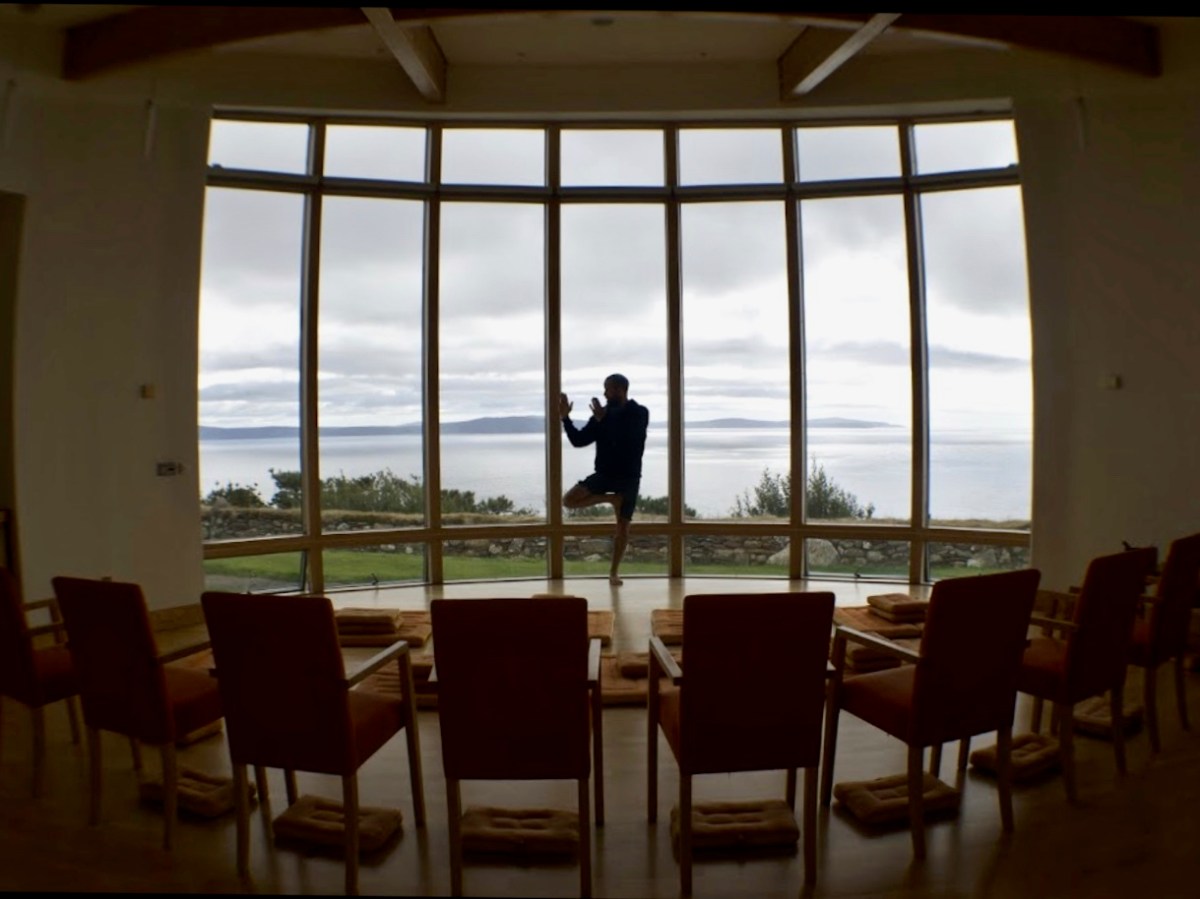
This shows one of the meditation rooms (courtesy of Dzogchen Beara Tibetan Buddhist Retreat Centre), with Pi Jun Taiwa in meditative posture. Below is a satellite image of the site showing its proximity to the coast and, below that, an extract from the 1840 OS map. I was intrigued to know what the buildings are that are shown occupying the site in those times. I have been unable to find the answer but wonder if they were connected to mining: the great copper-mining centre of Allihies is situated inland from here, but there are said to be ore-bearing lodes at Dooneen point, south-west of the new Centre.
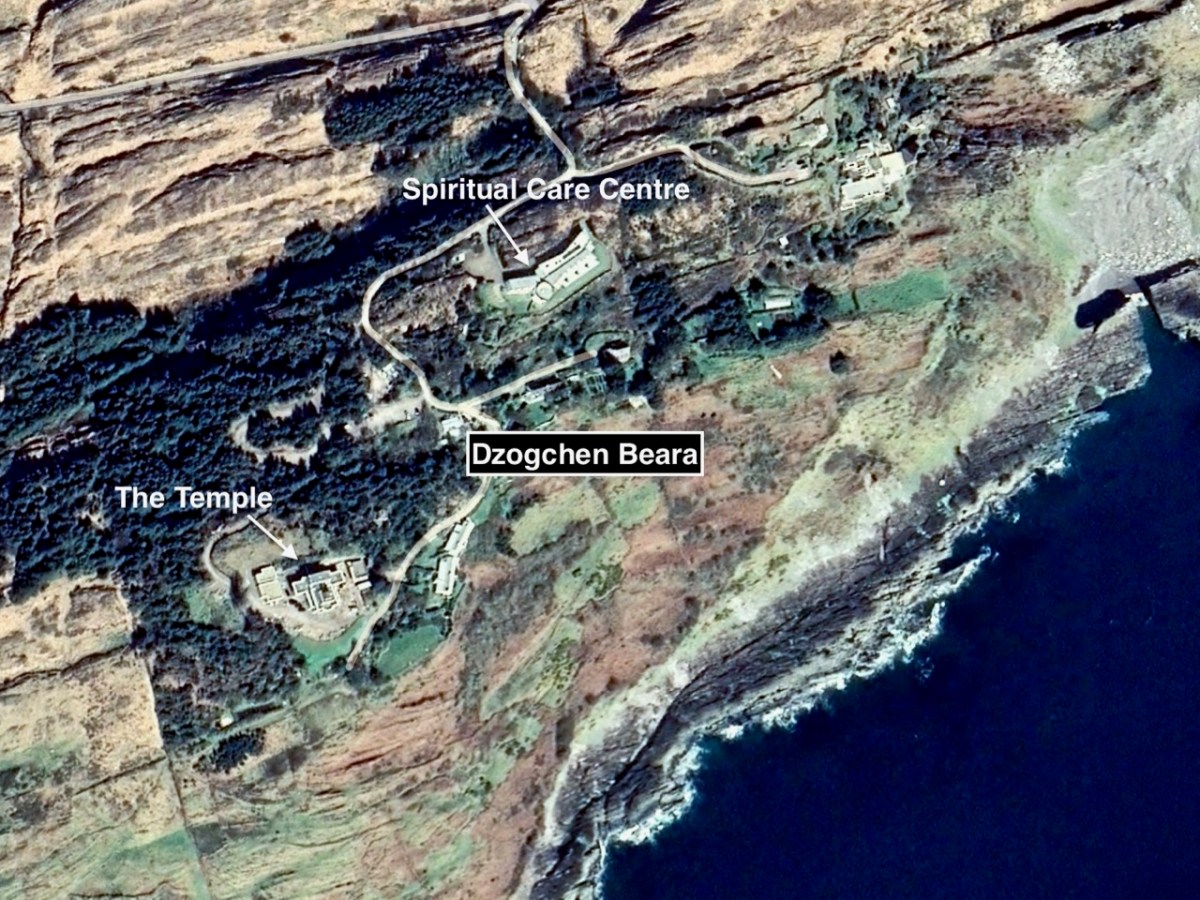
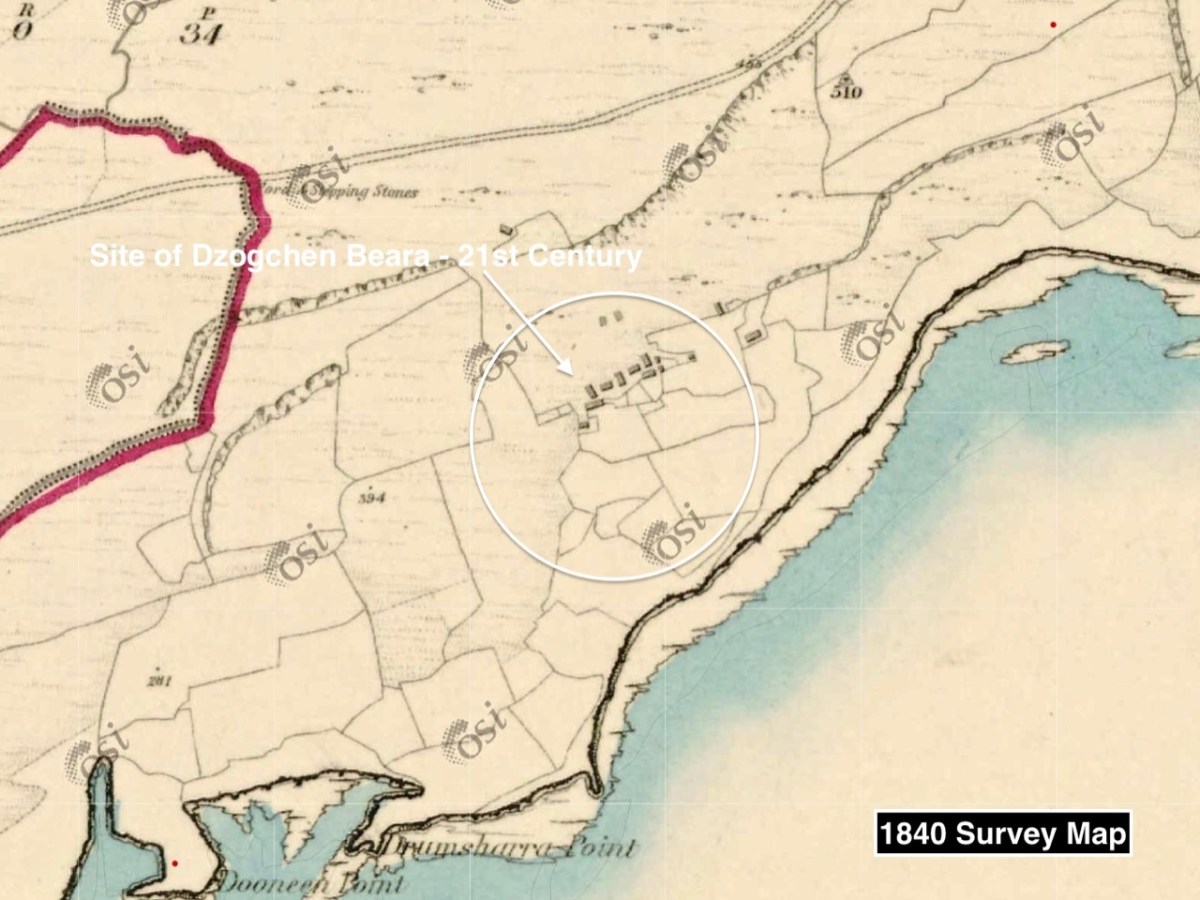
An exciting venture happening at Dzogchen Beara right now is the construction of the first Buddhist temple in Ireland! It’s a relatively long-term project – with progress held up by the Covid crisis. But we saw it under way and it promises to be an impressive modern building based in Tibetan tradition.
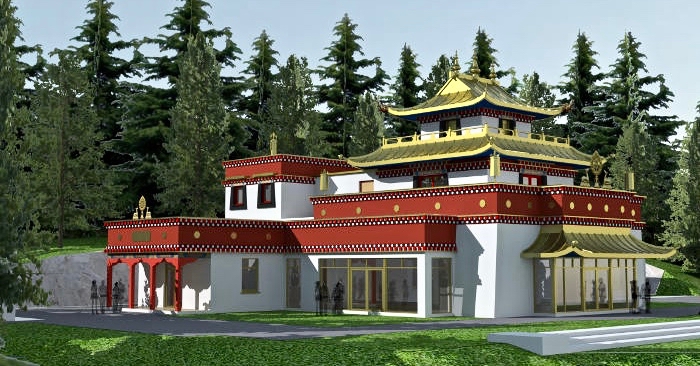
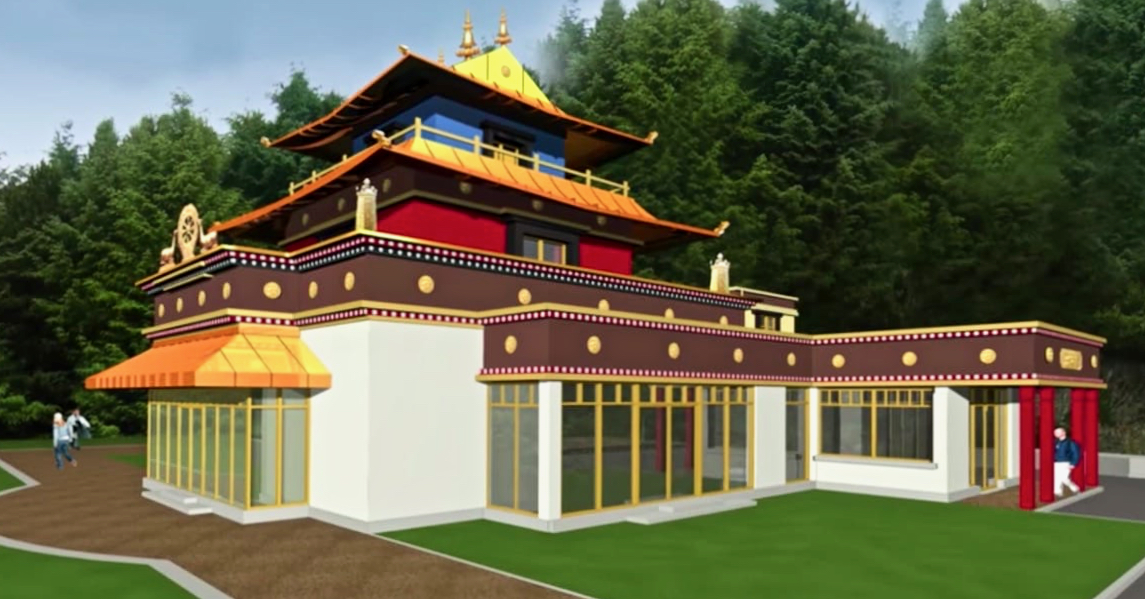

The site of the temple was consecrated in 2010 with a sacred fire ceremony. I was intrigued to read that the curving overhanging roofs are to be constructed from ‘Nordic Royal Copper’, a specially developed alloy containing zinc and aluminium: this should ensure that the copper retains its shining colour through all weathers: a traditional copper roof would become dulled and turn green after a few years. Instead, the roofs of this temple will shine like the ‘Beacon of Wisdom and Compassion’ that the architect imagined. At present, the building works are still very much in their unadorned basic form, but moving forward (below).
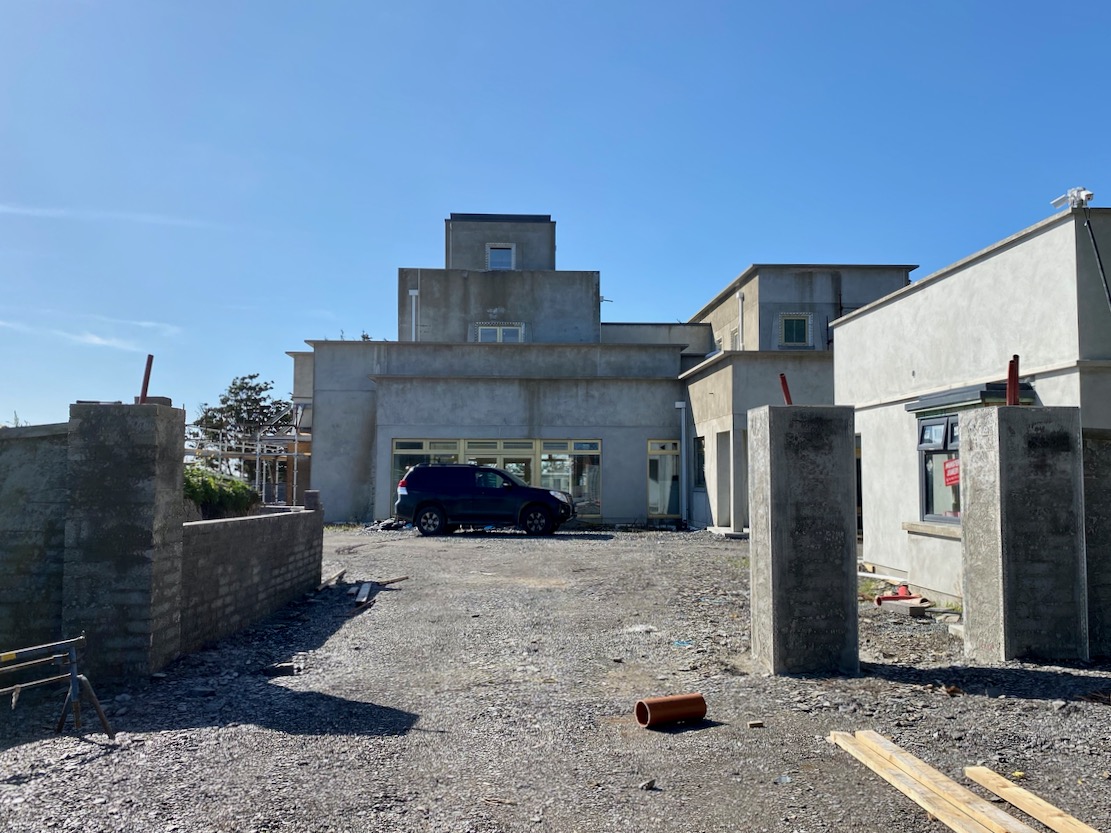

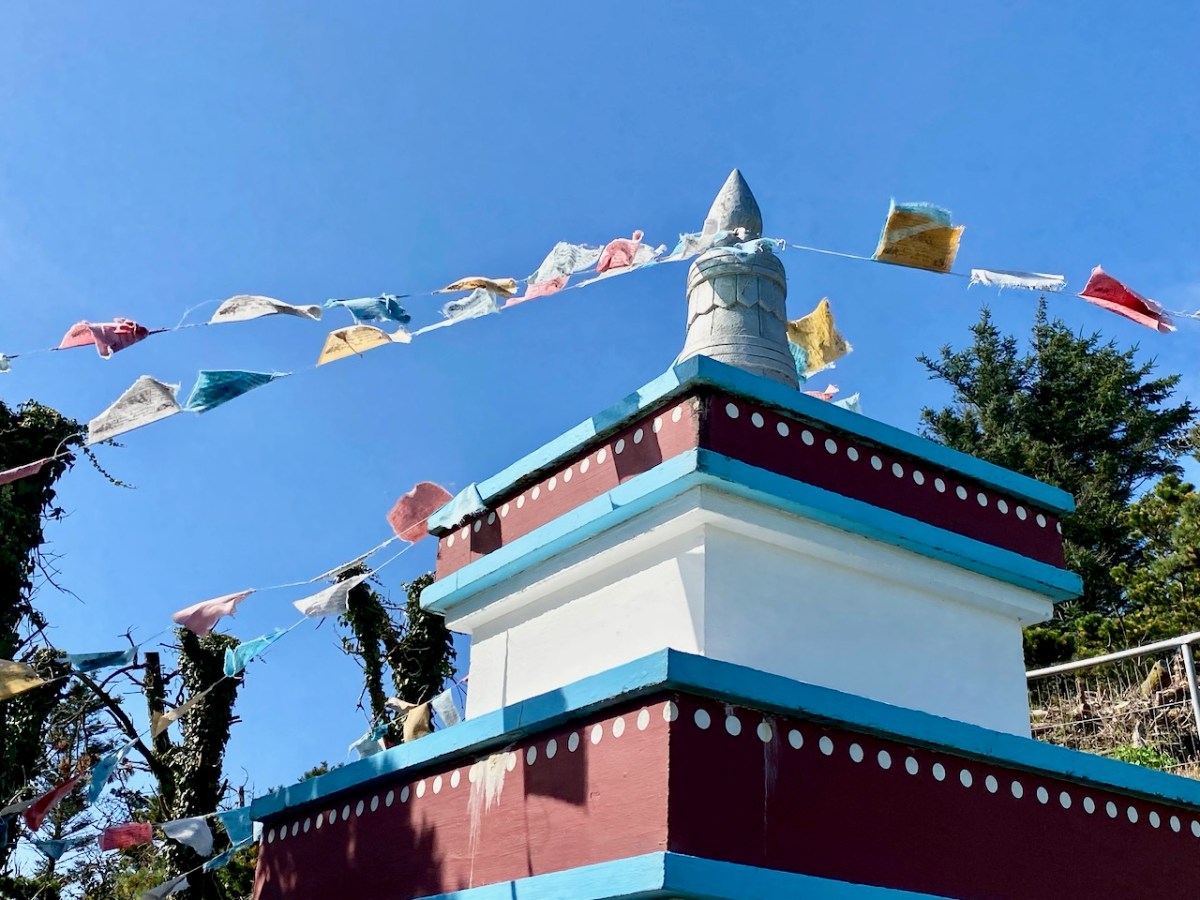
The Centre grounds already display a traditional ‘Stupa’. Originally, stupas stared out as sacred mounds or domes which were used to house the relics of the Buddha. Now they are symbolic structures which give special significance to their location, as here. They are always decorated with colourful prayer flags which serve to bless the surroundings. I can’t help seeing these flags in the same light as ‘rag trees’ often found by holy wells in Ireland. The processional way to the stupa is lined with tall prayer banners. And the whole stupa site also enjoys the wonderful views to the ocean.
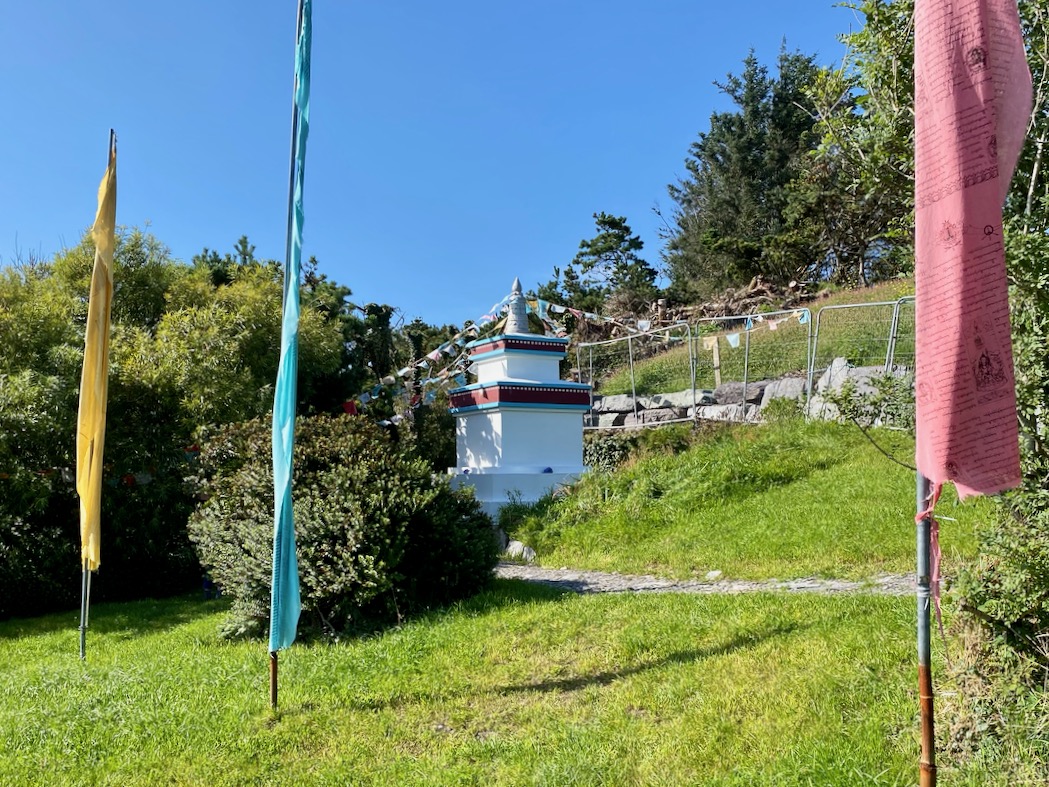
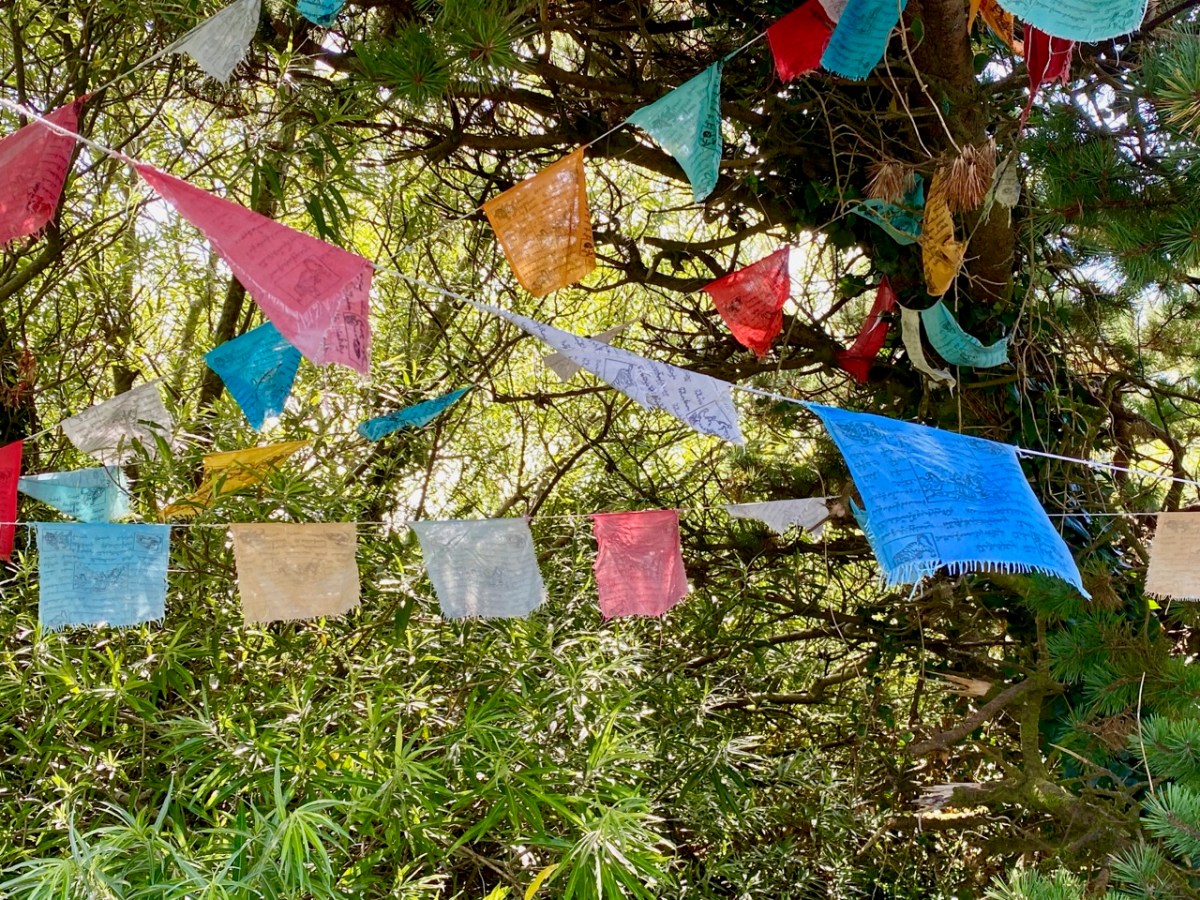
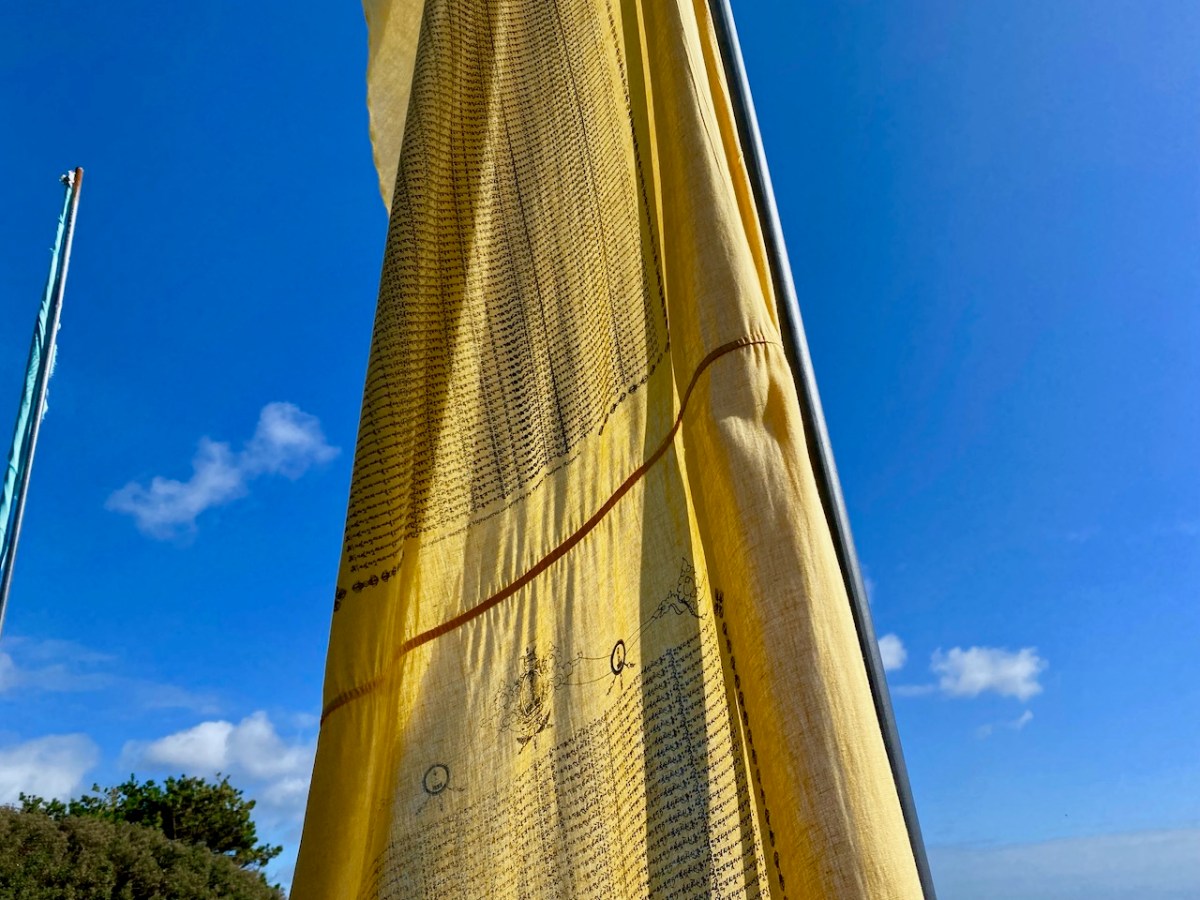
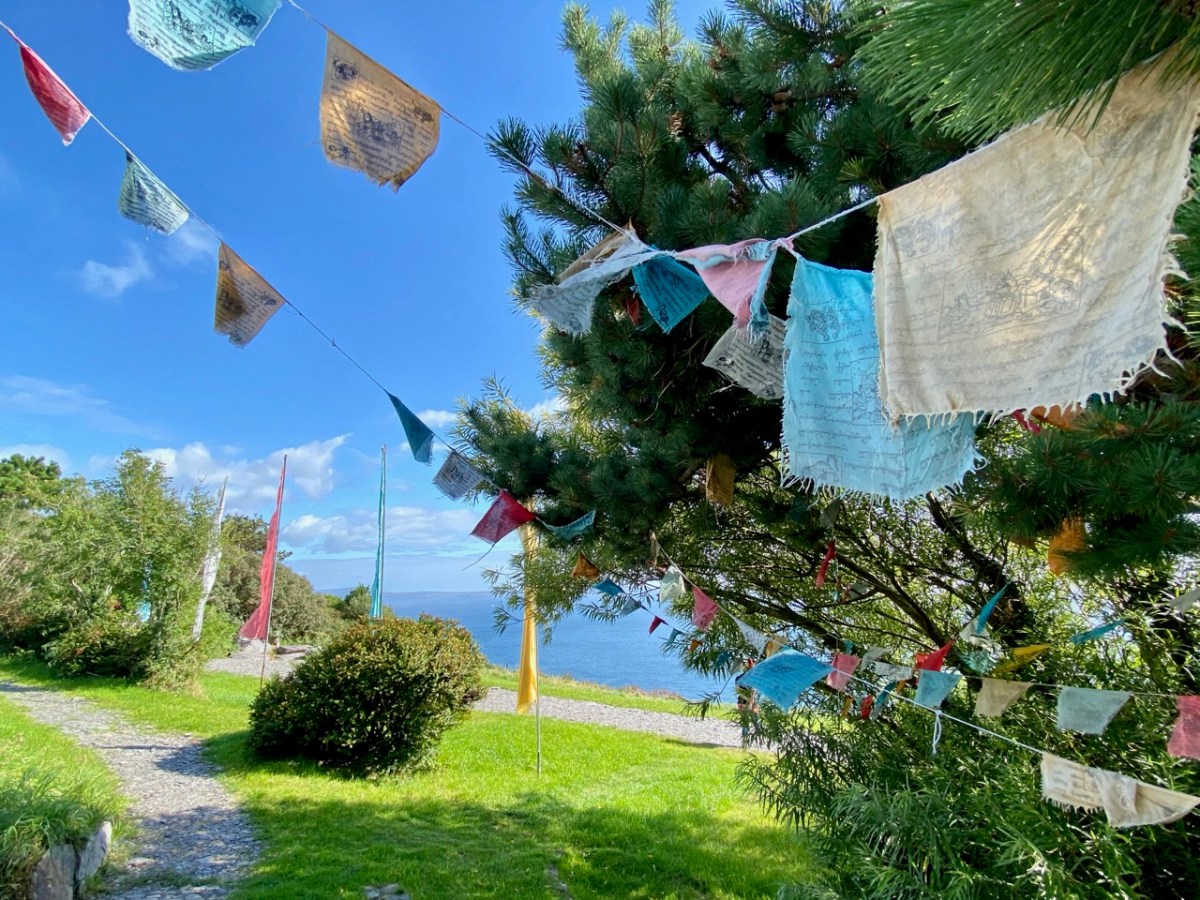
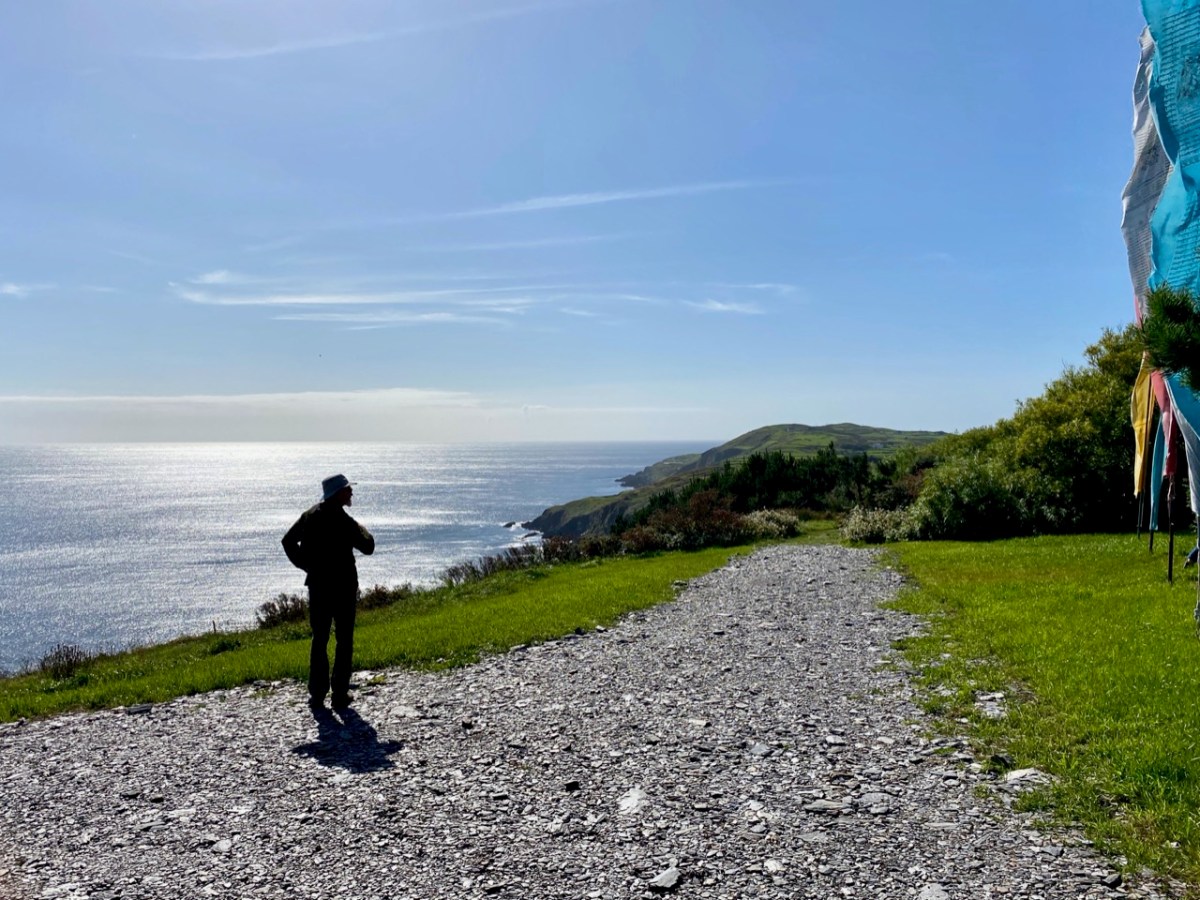
The year continues to pour down on us glorious golden days – and we embrace them. Our journey to the Beara was memorable, and I have no doubt that we will be calling into the Dzogchen Centre on many future occasions: I certainly want to keep an architectural eye on the progress of the temple. By the way, an apt translation of Dzogchen is “great perfection”.

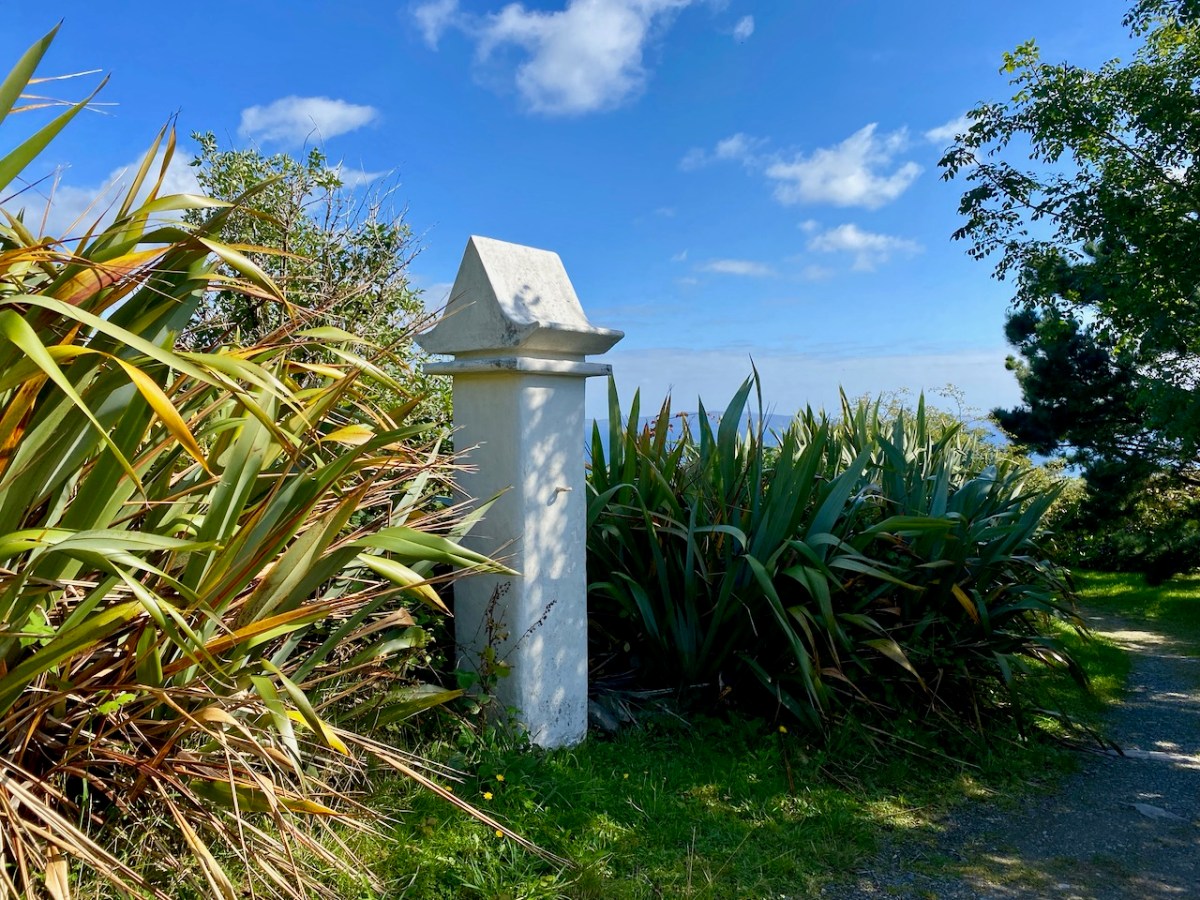
Discover more from Roaringwater Journal
Subscribe to get the latest posts sent to your email.
Thanks for sharing so many beautiful photos of the retreat centre. What a beautiful place this must be, and how fortunate to be able to go on retreat there!
take care
LikeLike
I Haven’t been yet, but hope to some day.
LikeLiked by 1 person
Brings back very happy memories of pilgrimages to Dzogchen Beara from Dalkey all those years ago. It felt so very remote then. The smells, the sounds, the pure, pure clarity of the air there. One visit included a visit by a lama and hours on meditation and incantation. Heart and spirit healing. Knowing there were hermits in the off limits area close to the sea. Very interesting to learn of the connection of Tibetan geomancy and Feng Shui! Thankyou Robert, once again enabling me to retravel memories.
LikeLike
How enlightening!
LikeLike
You probably know this already but the Dzogchen Centre was started by a British man called Peter Cornish and he has written a good book about his life and the starting of the centre called “Dazzled by Daylight”. He had a vision disability which makes the whole achievement even more impressive. I bought a copy in the previous Schull bookshop so it is still available I think so worth getting a copy (or you can borrow mine!). I think that goes into detail about the site and the former buildings.
Also good luck to Oliver above and his trip to Clovelly. As a young architect (late 1980s) I was the project architect for the visitors centre there and I have good memories of trekking down for site meetings and so on. I hope it hasn’t fallen into the sea yet!
LikeLiked by 1 person
A wonderful post and a wonderful place! It transported me from a damp, grey day in the Hebrides to the sunny Beara peninsula!. I’ve visited Buddhist temples in Scotland and England but it hadn’t occurred to me that you didn’t have any in Ireland, so it was interesting to read about this centre and it’s awe inspiring location.
LikeLiked by 1 person
Many thanks for the comment, Sulewath. I’m sure the Hebrides has many magical days similar to ours!
LikeLike
It is a special place for sure. Another example of how West Cork accommodâtes such a wide range of cultures.
(We’re off to Clovelly right now, by the way, so will be thinking of you as well as looking out for Picarooners!)
LikeLiked by 1 person
Thank you, Oliver. I have many good memories of Clovelly – and Picarooners!
LikeLike
Magnificent location for this centre. Dare I say it. I don’t really like the look of the proposed temple. Perhaps I am wrong about this but I like man-made structures that harmonise and are empathetic to the locality where they are built and indeed become a humble part of such a glorious natural landscape that is Dzogchen Beara. It’s perhaps a small thing, a personal thing, but I do love the whole idea of this centre and would love to visit it sometime. Great blog.
LikeLiked by 1 person
I think I can envisage the building looking really good there, Dermot: it’s a fabulous location, and the shining copper roofs will reflect the sunlight and make it sparkle. I think this could be the exception to the rule that says new architecture should always blend in. But everyone will have their own opinion, of course!
LikeLike
Wasn’t that a great visit, seen at its very best. I’ve enjoyed reading about all the Tibetan geomancy, it makes a lot of sense.
LikeLiked by 1 person
It was, Amanda. I want to visit again to see progress on the temple!
LikeLike
Off somewhere nice tomorrow? xx
Sent from my iPhone
>
LikeLiked by 1 person
Depends on the weather!!
LikeLike